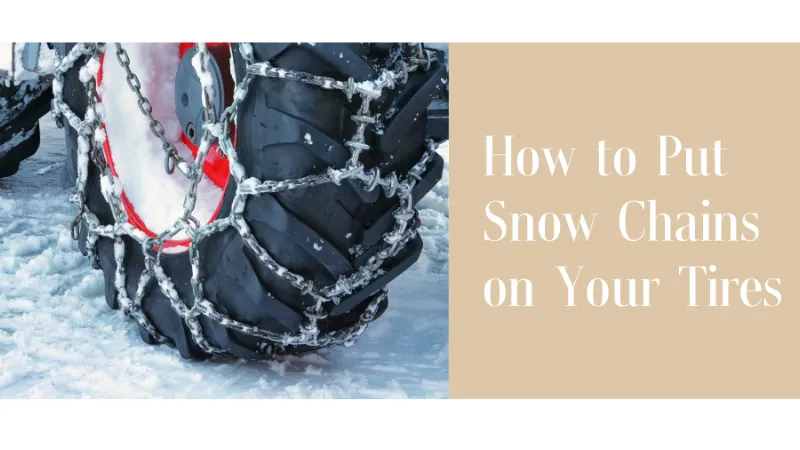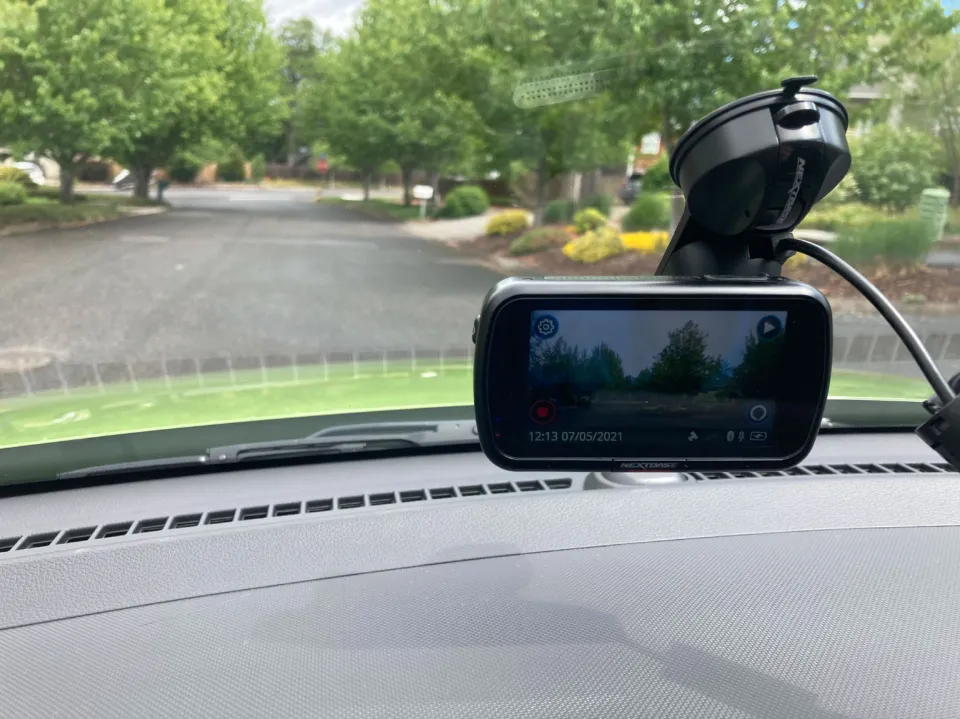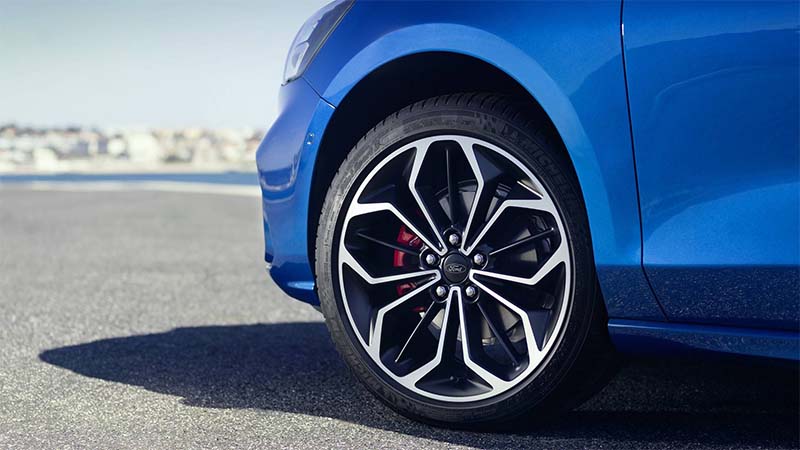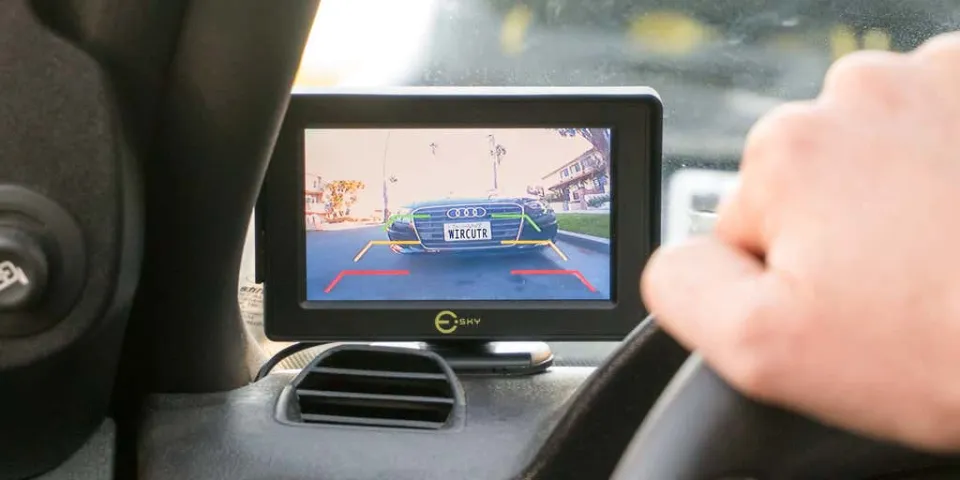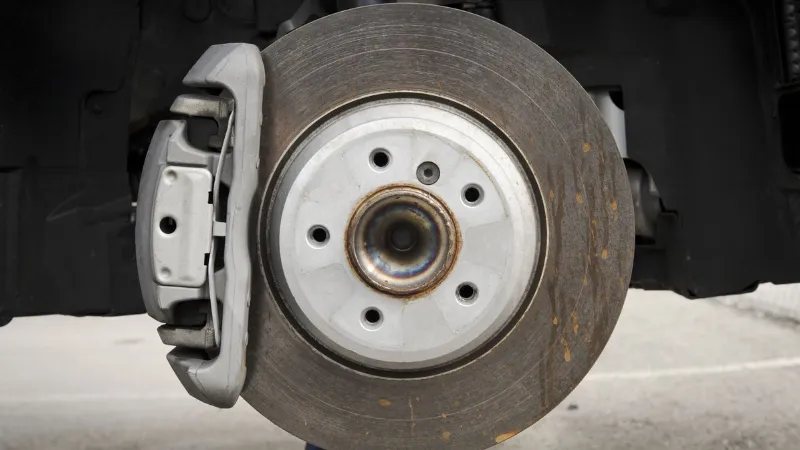Tire chains will eventually be necessary if you frequently travel to snowy or mountainous areas. So, How to Put Snow Chains on Your Tires?
You are supposed to get snow chains that match the size measurements on your tires, remove the chains from their packaging and untangle the links, lay the chains on the ground next to the tires you are installing them on, fit the snow chains over the top of the tire you are installing them on…
Keep reading.
What Are Snow Chains?
Roads become icy and dangerous for extended periods of the year in many parts of the nation due to winter weather. Even specialized snow tires, which will improve your car’s handling in the snow, may not be enough to get you through the worst winter storms. Installing snow chains on your tires is one of the best and most effective ways to give your car more traction in the snow. A snow chain can bite deeper into the snow and ice by being wrapped around a tire, which will stop your wheels from spinning out as easily. They’ll limit your speed and make your car a little bit clunkier to drive, but that’s a simple trade-off when you’re dealing with slick roads. See how to attach snow chains to your tires below.
How to Put Snow Chains on Your Tires?
Here are the details:
Get Snow Chains That Match the Size Measurements on Your Tires
To determine which snow chains you need for your vehicle, find out the size of your tire. If you notice a lengthy string of letters and numbers along the outside edge of your tires, look closer. When looking for snow chains, you’ll need this information.
- The first number indicates the tire width, the second the tire height ratio (the sidewall height to the width ratio), and the third the diameter of the wheel, which is typically expressed in inches.
- The packaging for the chain will specify the size of the tires it fits.Do not be reluctant to ask a store employee for assistance if you have any questions.

Remove the Chains from Their Packaging and Untangle the Links
Ensure that the metal is straight and free of twists or kinks so that the chains are arranged in a web-like pattern. It’s best to be prepared and put your chains on before they are actually required because this process can take longer than you might anticipate.
Lay the Chains on the Ground next to the Tires You Are Installing Them On
Put the chains on both of the front wheels of your vehicle if it has front-wheel drive; on both of the rear wheels if it has rear-wheel drive. Install the chains on each of the four tires for all-wheel or 4-wheel drive.
- Chains can be installed on all four tires of a front-wheel drive or rear-wheel drive car for extra security and control in ferocious weather.
Fit the Snow Chains over the Top of the Tire You Are Installing Them On
Before you start, make sure your car is in park and that the parking brake is applied. The chains should hang down along the sides after being straightened over the top of the tire. It ought to extend to roughly three-quarters of the tire. Additionally, check to see if the chains that span the tire’s width from side to side are straight.
- To keep the chains in place as you move forward in your vehicle, tuck them between the ground and the tire’s bottom.
- Rings may be attached to certain kinds of snow chains. You must get under your car to install this type of chain, and you might need to make a small adjustment to make sure they are on straight. These rings go along the inside of the wheel and should rest on the bottom of the tire, close to the ground, during installation.
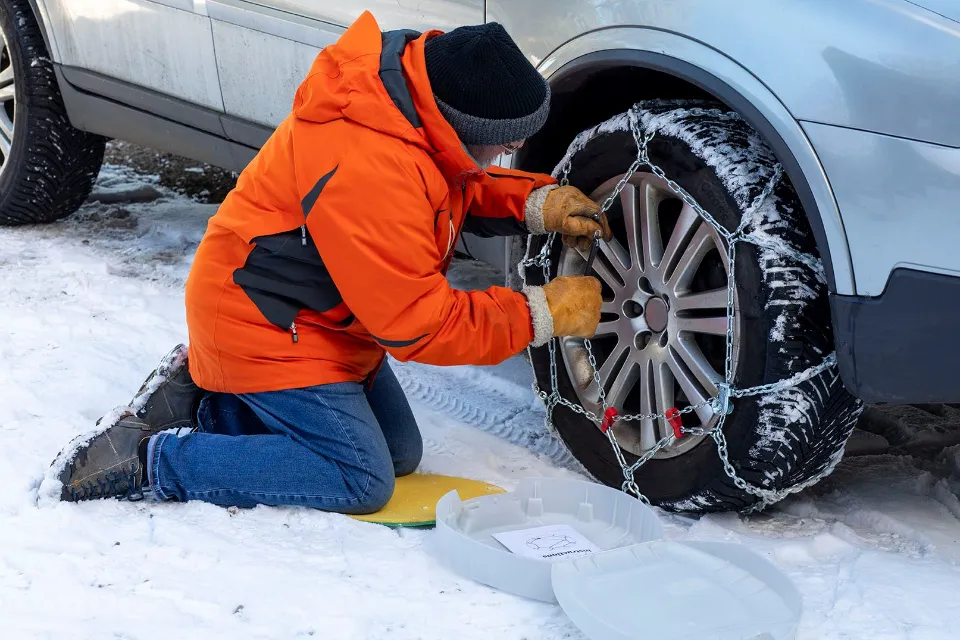
Drive Your Vehicle Forward to Expose the Unfitted Portion of the Tire
Before releasing the parking brake, make sure you are in the right place. Then shift into drive and start to move forward a little. Just move forward a little bit; keep in mind that only a small portion of the tires are unfitted.
Turn the Wheel Toward the Inside of the Vehicle for Easier Access
Turn the wheel toward the interior of the car once you’ve decided you’ve moved forward far enough to ensure complete coverage of the tire. As a result, you will have easier access to the connections and will be able to finish securing the chains more quickly.
- Turn the steering wheel to the right to point the tire inwards if you are attaching the chains to the left tires.
- Turn the steering wheel to the left to point the tire inward if you are attaching the chains to the right tires.
- Put the car in “park” and engage the parking brake once more.
Connect the Chains Together to Cover the Remaining Portion of the Tire
Connect the two hooked edges beginning at the inner portion of the tire close to the axle. Then join the hooked edges on the tire’s outer perimeter.To make the chains as snug as possible, rotate the closer link or tightening cam.
- A link-tightening tool can be used to tighten conventional chains, but you should avoid using it on link unit chains.
- Chains without built-in tightening cams are frequently made even tighter over your tires using a bungee cord with hook fasteners. Most places that sell snow chains also sell these.
Make Sure the Inner and Outer Connections of the Chains Are Aligned
Verify that the chains are primarily running straight across the tire’s width. If the inside of the chain is tight but the outside is loose, you will need to straighten the chains on either side before tightening them again.
Repeat the Exact Same Process for the Other Tire(s) on Your Vehicle
Fit the chains over the top of the tires and tuck them underneath, move forward to reveal the unfitted portion, connect the chains, and then check to see that they are straight across the tire.
- Once you’ve gained some practice putting on snow chains, you can begin attaching chains to either your front or rear tires at once. This will make things move along much more quickly.
Drive About 100 Feet (30 M) and Re-tighten the Chains
As you drive, the snow chains will move a little bit. Use the closer link or tightening cam to re-tighten each chain after a brief drive to ensure they are secure enough for safe travel.

Do These Two Things Before You Leave
Driving conditions are bad when you need chains. Snow is falling, slush is being sprayed by oncoming traffic, dirty water is dripping from your wheel wells, the road is slick, and it might be getting dark. Do not put on your chains for the first time right now.
Practice installing your new chains once BEFORE you travel. Make sure your winter tire chains are the appropriate size and that you feel comfortable putting them on in a dry garage or driveway. Les Schwab Tire Centers’ experts can assist if necessary.
Put together a simple winter road trip safety kit with warm gloves, waterproof layers, and other items to make your winter driving more safe and comfortable. Always keep tire chains and this emergency kit in your car during the winter.
How to Drive With Snow Chains on Your Tires
Keep an ear out for a loud slapping or metal on metal sound while driving with tire chains. Stop as soon as it’s safe to do so if you hear even the slightest hint that a chain might break or collide with your car. A strut or shock component may become wrapped in a chain that is loose or broken and flaps, seriously harming your car. Here are some recommendations for driving with winter chains installed on your car to help you avoid damage.
- Don’t go over 25 miles per hour, or else you can damage the chains or your vehicle
- Never drive on bare pavement
- Avoid locking or spinning your wheels by starting or braking suddenly
How to Pack and Store Snow Chains?
Your chains should be laid out in the garage to dry after your trip. They may rust if you pack them in wet materials.
Additionally, examine them for wear, especially if you’ve traveled far on asphalt. Find any flat spots, and if you do, replace the chains.
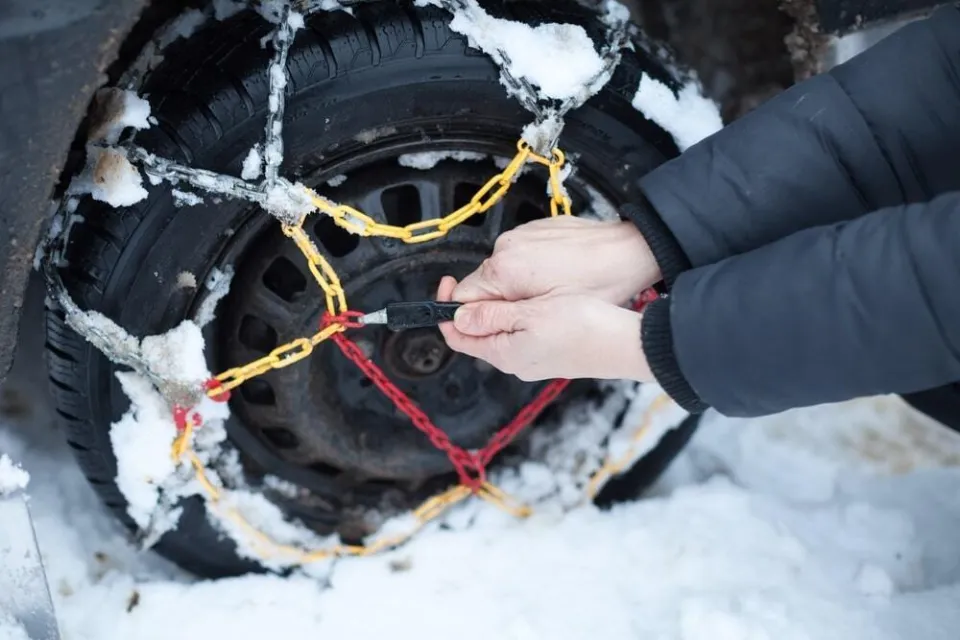
FAQs
Is It Easy to Put Snow Chains on Tires?
Putting snow chains on your vehicle is not the easiest thing to do, but once you’ve done it for the first time, the mystery will be gone & you’ll be able to bore everybody down the pub with your new-found skill. Ask for assistance in the store if you need it. The packaging for the chain will specify which tires it fits.
Do You Put Snow Chains on All 4 Tires?
Four-wheel drive vehicles should use tire chains on all four tires. Two-wheel drive vehicles must have tire chains on the wheels that are attached to the drive axle, but having chains on all four tires makes driving much safer and easier.
Do You Put Snow Chains on Front Or Back Tires?
Front-wheel-drive vehicles must install tire chains on the front tires. Tire chains must be installed on the rear tires of rear-wheel-drive vehicles. When traveling in areas where tire chains are required, tire chains are only required on the driving axle.
Do I Need 2 Or 4 Snow Chains?
Ideally, you should put tire chains on all four tires for all types of vehicles. By using four tire chains, you’ll be able to obtain the best possible traction and balance. If you only chain one axle, issues may arise.
How Fast Can You Drive With Snow Chains?
The speed limit when chains are required is 25 or 30 miles an hour. Wait to put on chains until you can completely veer off the road to the right. Stopping in a traffic lane will put you in danger and impede traffic.
Summary: How to Put Snow Chains on Your Tires?
You are supposed to get snow chains that match the size measurements on your tires, remove the chains from their packaging and untangle the links, lay the chains on the ground next to the tires you are installing them on, fit the snow chains over the top of the tire you are installing them on…
Please feel free to forward this article’s content to your friends who own cars so that they can also gain from Putting on the Snow Chains. Thank you for reading.

